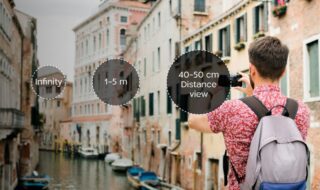
Night Driving Dangers
Research points to a number of visual challenges consumers encounter when driving in the dark. That’s especially true with young drivers and older ones. Here are several stats that underscore the importance of this subject, along with a few tips to help you keep patients safe.
Tip: Hang up! The number one cause of distraction-related collisions is cellphone use.
SERIOUS STATS
SENIORS
- People over age 70 are more likely to cause accidents and, according to the American Medical Association (AMA), “are vulnerable to crashes in complex situations that require good visual perception, attention, and rapid response.”
- How rapid? The American Automobile Association has found that drivers usually have less than half a second to avoid an accident.
- These challenges are exacerbated at night as older Americans have more difficulty seeing after dark, including under-70s with developing cataracts. One result? The National Safety Council reports there are three times more traffic deaths at night than during daylight.
YOUNGER MOTORISTS
- Young drivers are more likely to be involved in fatal accidents than older drivers.
- They’re also more likely to be distracted drivers. The number one cause of distraction-related collisions is cellphone use, reports yd.com.
- And the biggest overall cause of teen accidents is lack of experience. Plus driving without lights.
PRACTICE TIPS
- FOR SENIORS. The AOA recommends sharing these tips: Use extra caution at intersections and turn your head frequently; reduce speed and consider limiting yourself to daytime driving; avoid wearing glasses with wide frames or temples as they may restrict side vision; take a driving course for seniors such as those offered by AARP; and, finally, have an annual eye exam. The AOA does, in fact, recommend them for everyone over 60 partly because research, including its Eye-Q consumer survey, found that “78% of adults age 55 or older report experiencing some vision loss.”
- FOR YOUNGER DRIVERS. WebMD suggests: these nutrition-focused folks should check their diet to make sure they’re getting enough zinc; make sure any decline in night vision isn’t due to retinitis pigmentosa, which is usually symptomatic by age 30; that they wear sunglasses and understand that sustained exposure to bright light can impact night vision for two days…not to mention its cumulative effects; and, according to ydCanada.com, reduce speed, increase following distance, and check headlights and mirrors.
For both age groups encourage them to 1) wear sunglasses during the day, and 2) protect their eyes from UV and glare.
What about communications? Send birthday messages to patients, especially younger ones, recommends optician Carlene McBride in Temecula, CA. “A 16, 17, or 18 year old is surprised to hear from you, and sending a personal message about the importance of eye protection behind the wheel tends to get their attention.”
Is night driving a subject you address? If so, with young drivers as well as seniors? Tell us what you say, and share in the conversation on Facebook here.
Comments are closed.









